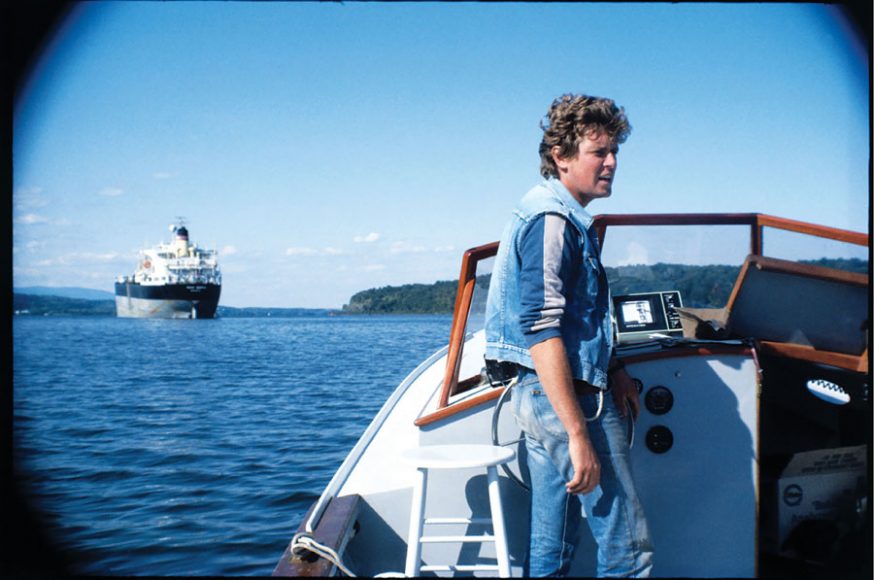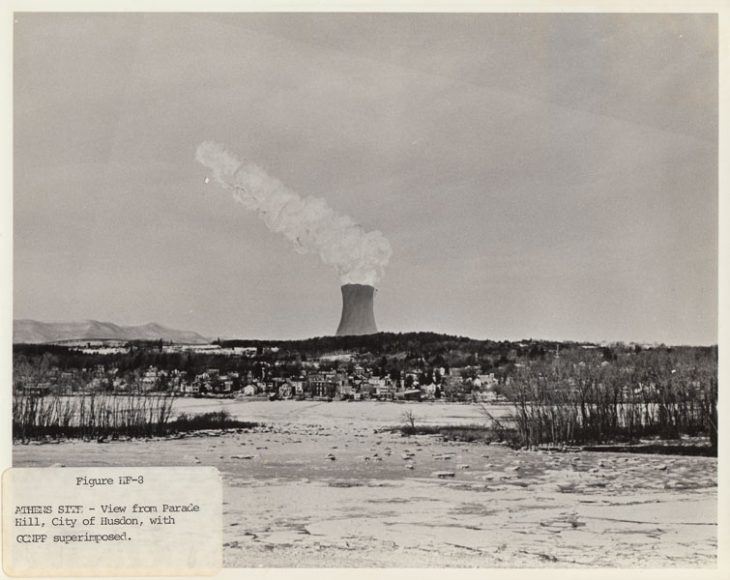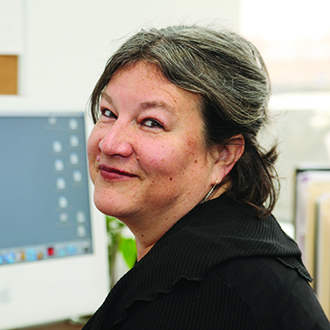We didn’t expect to turn a corner in the museum gallery and see a tank filled with fish — but quickly realized those Atlantic striped bass made perfect sense.
We were, after all, in the midst of “Hudson Rising,” a sweeping exhibition exploring 200 years of ecological change and environmental activism along the Hudson River.
The tour-de-force show at the New-York Historical Society Museum & Library in Manhattan includes not only these living examples of the river’s inhabitants but also an array of artifacts, media and artwork brought together in a thoughtful exploration of the 315-mile waterway.
It’s a pointed journey, though, offering a story about change that is artfully developed through the inclusion of everything from Hudson River School paintings to music by Hudson Valley activist Pete Seeger, from steamboat models to oyster shells, from vintage tourist brochures to media coverage of pivotal environmental battles.
In short, the expansive exhibition that continues through Aug. 4 at the Manhattan institution is designed to encourage the visitor to rethink life on and around the river that continues to be integral to our region in so many ways.
“Hudson Rising” is presented in themed sections, starting with the historic “Journeys Upriver: The 1800s” and concluding with “A Rising Tide: Today,” a captivating finale showcasing innovative projects
addressing climate change.
“Hudson Rising,” is much more than a lazy paddle on the river, as Louise Mirrer, the society’s president and CEO, noted during the exhibit press preview’s opening remarks.
As she said, “The exhibition addresses important environmental issues of the past 200 years, many of which continue to resonate today.”
She offered her remarks amid the show’s prelude, a lobby installation featuring Thomas Cole’s five-part “The Course of Empire” series, a panoramic work from 1833 to ’36. This historical society treasure sets the tone for a cautionary tale about the transformation of a bucolic landscape into a kind of ancient Rome that experiences a dramatic destruction and, finally, a return to its natural state. Cole’s questioning of the cost of progress hints as to what will follow in “Hudson Rising,” to be sure.
“We really hope the exhibition will inspire our visitors to see the river differently,” Mirrer added.
Curated by Marci Reaven, the society’s vice president of history exhibitions, and Jeanne Haffner, associate curator, “Hudson Rising’s” five sections spotlight significant locations and events in the environmental history of the Hudson.
“Journeys Upriver: The 1800s” offers a steamboat trip up the river from New York Harbor to Albany. Here, we see natural wonders, explore Hudson Valley industries such as brick making and admire paintings such as Robert Havell Jr.’s “View of Hudson River From Near Sing Sing, New York” (circa 1850).
Next, we visit “The Adirondacks: 1870s-1890s,” which examines the creation of the Adirondack Park, established to save the source of the river and combat deforestation, a necessary step to protect the viability of the entire Hudson watershed.
“All of these uses and values start to come into conflict with each other,” curator Reaven noted as she walked a group through the show.
We continued to “The Palisades: 1890s-1950s” as forests and cliffs of the natural beauty are protected and citizen-activists work to save the scenery. “The Palisades were actually being blown to bits,” Reaven noted.
Palisades Park, celebrated through tourist brochures and evocative imagery, emerged at the time, encouraging city dwellers to spend time outdoors.
“The Hudson Highlands: 1960s-1980s” explores the way in which activism along the river sparked the modern American environmental movement. Discussed here are river pollutants, power plants rising along the river banks and the threats to so many classic scenic views. In this section, we heard not only music from Seeger but also saw a photograph of John Cronin, river patroller for the environmental watchdog group Hudson River Fishermen’s Association (now Riverkeeper) confronting an Exxon tanker discharging pollution into the river.
Finally, “A Rising Tide: Today” brought us to the forefront of the process of reimagining and reclaiming the Hudson, spotlighting cutting-edge responses to climate change.
“We tried to examine the legacy of many challenges and achievements we talked about earlier in the exhibit,” Reaven said.
Here, displays address restoring aquatic habitats and shorelines and lessening the eroding effects of massive waves.
The exhibition’s conclusion provided a perfect moment to remember — and reflect on — words from Cole’s 1836 “Essay on American Scenery” that are posted on the wall near the artist’s prelude panorama:
“Nature has spread for us a rich and delightful banquet. Shall we turn from it?”
“Hudson Rising” continues through Aug. 4 at the New-York Historical Society Museum &
Library, at 170 Central Park West in Manhattan. For more, including details of related programming, visit nyhistory.org.









